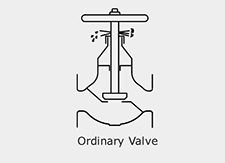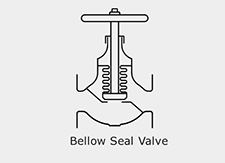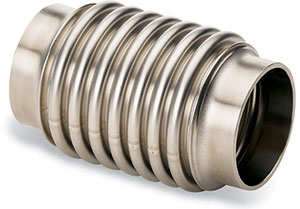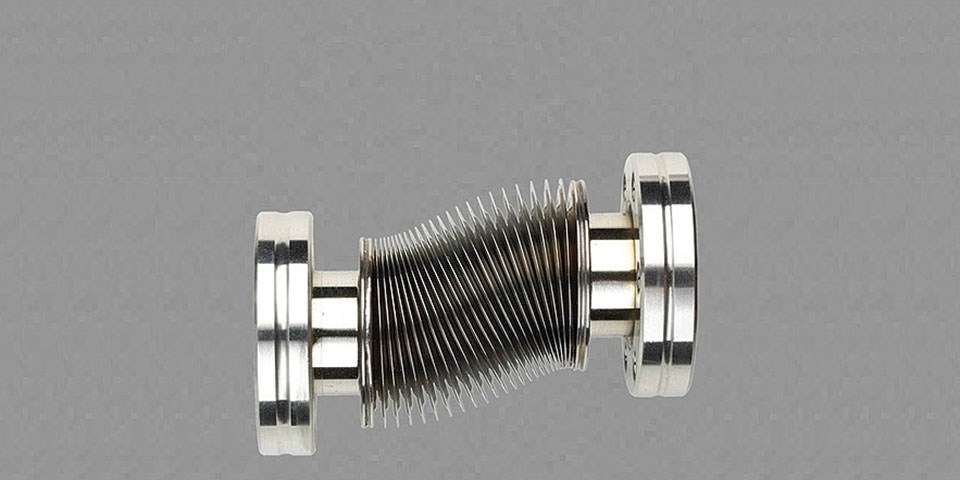 To analyze the cost benefits of installing a bellow seal globe valve in a steam system Mr Salins has worked out a comparison with a piston valve and also a conventional globe valve, based around valves with a 15mm diameter and steam at 150 psi.
To analyze the cost benefits of installing a bellow seal globe valve in a steam system Mr Salins has worked out a comparison with a piston valve and also a conventional globe valve, based around valves with a 15mm diameter and steam at 150 psi.
His analysis is a development of work done by Witzenmann GmbH.
“Three types of cost need to be considered: the capital cost, the maintenance cost and the cost caused by the downtime and loss of energy/media,” indicates Mr Salins.
 “Of course, the figures may need to be adjusted from user to user and country to country based on the prevailing cost of the valve, the cost of steam generation, etc.”
“Of course, the figures may need to be adjusted from user to user and country to country based on the prevailing cost of the valve, the cost of steam generation, etc.”
When it comes to a straight comparison of the capital costs (figure 1) then the bellow seal valves is the least favorable, costing two to three times as much as the alternatives.
However, the initial investment soon starts to deliver a pay back when the maintenance costs are considered.
Mr Salins: “we can assume that gland leakage will begin within a period of six months in a standard globe valve and in a period of nine months in a piston valve.”
“We can then determine the costs per year for the plant owner, based on the cost of spare parts as well as the necessary labour at USD 6 per hour.” (See figure 2)
Thus far the figures may not look that compelling for the bellow seal valves.
However, the picture starts to look very different when the cost of energy/media loss is factored in, states Mr Salins.

“Let’s assume a gland clearance of 1 thou (0.001 inches) for estimation of gland leakage and a cost of USD 20 per ton of steam. This means steam will escape at a rate of 25 lbs/hr through this clearance (as per steam tables).”
“Now if we assume a leakage rate of 11 kgs of steam per hour this means 264 kgs of steam loss per day or 7920 kgs per month. Given a cost of USD 20 per ton of steam this equates to energy losses of roughly USD 5 per day or USD 160 per month which can be saved!” (See figure 3)
 “Moreover, the cost of downtime is priceless and a value as such cannot be put on it. It can vary from a few hundred to millions of US dollars per day,” notes Mr Salins.
“Moreover, the cost of downtime is priceless and a value as such cannot be put on it. It can vary from a few hundred to millions of US dollars per day,” notes Mr Salins.
When the cost of maintenance and steam losses are factored in, then suddenly the bellow seal valves starts to become a very attractive proposition, indicates Mr Salins.
“If we compute a total cost of ownership table for all three valve types for a twelve month period, then the bellows seal valve costs just a fraction of other designs,” he states. (See figure 4.)
1 Since we have assumed leakage will begin after nine months
2 Since we have assumed leakage will start after six months
In short, Mr Salins says the bellow seal valves
can be a good selection for a great many
applications.
“There are a lot of positives for the bellows seal
valves. They are zero leakage, can save a lot of
money by eliminating the loss of costly steam
and are long-lasting,” he stipulates.
of Valve World. This article looks at the various types, the production techniques. Not a subscriber? Contact
David Sear on d.sear@kci-world.com for a PDF copy.



